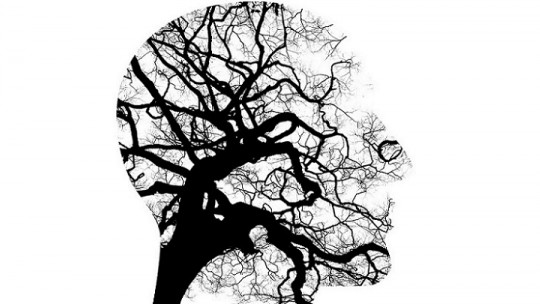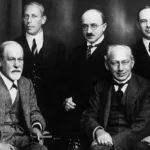There are many therapies that, starting from the psychoanalysis closest to Sigmund Freud, have tried to address in various ways the suffering of patients and how to improve their psychological state.
Among these currents, still included within the psychoanalytic approach, is focal psychodynamic therapy characterized by being a brief therapeutic alternative that focuses on the patient’s priority problems.
Although it has a clear relationship with the rest of psychodynamic therapies, it also presents some nuances that differentiate it from the most classic psychoanalysis, giving it some advantages and limitations. Next we will see what this very peculiar therapy is about.
Focal psychodynamic therapy: what is it?
Focal psychodynamic therapy, also called brief psychodynamic therapy, is a form of treatment in which an objective, called focus, is visualized and one works on it the rest of the sessions that make up the therapy. By having very specific objectives, the scope of the therapy is limited in their resolution.
This psychotherapy was prepared by the group of Michael Balint, Paul H. Orstein and Enid Balint In it, techniques such as selective forgetting and selective attention are used in terms of the interpretation of the patient’s problems.
In this way, and according to the authors, it is possible to make the patient have greater insight into the real cause of their suffering. Thus, once the patient understands the origin of her discomfort, it is possible to generate more lasting therapeutic changes.
Therapy, as we were already saying, focuses on addressing a single problem or conflict in the patient, trying to reach its prompt resolution. Thus, it could be said that this psychotherapy takes into account the saying ‘he who covers a lot, packs little’, that is, it prefers to focus on a single issue and make sure that it is resolved before trying to change the person’s entire internal world. .
Within this therapy, which is included within the psychoanalytic current, a focus is understood to be a specific problem , on which the efforts and attention of both the patient and the therapist will focus during the sessions. This focus must be specific, unambiguous and clearly delimited. Brief therapies do not aim to remodel the patient’s broad personality, but rather to resolve one or a limited set of problems suffered by the patient, in a short period of time.
The internal world of each patient can be very extensive, which is why trying to resolve everything that is dysfunctional can be a titanic task. A treatment that aims to fix everything that causes discomfort to the patient must necessarily be long. Besides, changes will happen slowly which can cause the patient to not have a real perception of improvement and end up abandoning the therapy, frustrated by not seeing the desired changes.
Along the same lines as the previously mentioned authors, there are many others who point out the convenience of focusing or centering therapeutic work on a certain area, symptom or problem of the patient, giving it the highest priority during treatment. That is why this type of therapy is called focal.
The psychotherapist, at the beginning of therapy, has the great responsibility of deciding which focus requires the highest priority, so that it is properly addressed throughout the treatment. However, it is the job of the patient-therapist tandem to accept and develop a therapeutic plan that can achieve the originally stated therapeutic goal.
Duration and application
As its name indicates, focal or brief psychodynamic therapy has a short duration. Although there are discrepancies between professionals, The most common thing is that there are no more than 25 sessions , although ideally there would be a total of 14 sessions in which the therapy will be carried out. The first session would consist of the interview with the patient, the second to number 13 being the treatment itself and number 14, the closing session. These sessions would be held once a week.
This therapy is highly recommended for patients who are suffering from some type of discomfort, but who are also functioning correctly at a social, work/academic level, and in life in general. It serves to make the person see what has led them to have a series of symptoms and relate them to their emotionality.
So this therapy It is not possible to apply it to serious personality disorders or psychiatric problems The reason for this is, basically, because the object of focal psychodynamic therapy is very limited and brief, something that is not convenient for the treatment of this type of disorders, given that they can become chronic and require very deep and extensive changes. in the person.
Although, there are several studies that have applied this therapy in eating disorders, such as anorexia nervosa. By using this therapy, you can resolve problems concerning your relationship with food, especially aspects related to calorie control.
Also, and especially related to his emotionality, In this brief therapy, aspects such as their feelings towards how they believe others see them are worked on childhood lived and thoughts when looking in a mirror or putting on clothes.
Requirements to work with her
In order for focal psychodynamic therapy to be carried out in the most efficient way possible, it is necessary that both the patient and the professional meet a series of requirements. If not, It will be necessary to consider other types of therapeutic options or refer to another professional such as a psychiatrist or family doctor when appropriate.
Among the characteristics and requirements that the patient should meet so that focal psychodynamic therapy can be applied, it is necessary that he or she have a good awareness of psychopathology, or of suffering from a problem. He must also understand that he has the responsibility and commitment for the evolution of this problem in the context of therapy. That is, it depends on the degree of motivation and desire of him to want to resolve the problem.
The patient must have adequate impulse control , expected for their age and educational level, which is neither excessive nor scarce. You must also have an adequate tolerance for frustration, and express a degree of anxiety that is within levels that do not overwhelm your behavior or mental health. If your anxiety is too high, it is recommended to apply a longer therapy, focusing on various aspects of the person, whether experiences or personality traits.
Finally, among the most convenient characteristics that the patient must present in order to carry out this therapy, are the have an adequate intellectual level , in addition to non-pathological capacities for symbolization and abstraction. It is also desirable that you have a self-esteem that is neither too diminished nor excessive.
From all the characteristics that the patient must present, it can be understood that this type of therapy is recommended for patients with moderate discomfort. For example, a patient with a disorder as serious as schizophrenia or bipolar disorder would not be suitable candidates to undergo this type of therapy. In addition to suffering from disorders that cause a high degree of discomfort, these must be addressed together with psychopharmacology.
On the other hand, so that the therapy can be carried out in the most appropriate way, It is necessary, of course, that the therapist has a series of requirements that allow you to carry out this therapy. Among them is having been a patient in a long-term psychoanalytic therapy. With this, the therapist will be able to grow as a professional, knowing how to clearly differentiate between his or her discomfort and that of the patients, and providing good management of countertransference.
Although the most suitable patient profile for this therapy is someone who is not suffering from a serious mental disorder, this does not mean that it is an easy-to-apply therapy. The therapist must have a lot of clinical experience in long-term psychodynamic treatments, which will serve as a prior basis to be able to apply the brief version of these treatments. It is recommended that, at the beginning, you be supervised by another professional with more experience.
As for more personal attitudes, The professional must have good detailed observation , while being organized and knowing how to prepare good therapy planning. Only with detailed observation of the patient’s discomfort will it be possible to detect which aspect of the patient should become the focus of therapy. Along with this, you must have a good tolerance for frustration because, unfortunately, you cannot always fix the patient’s entire internal world.
Differences between classical psychoanalysis and focal psychodynamic therapy
Although within the psychoanalytic current, focal psychodynamic therapy differs from the more classic psychoanalysis for several reasons. Below we see the main differences between both types of therapies.
Within classical psychoanalysis, especially in relation to long-term therapies, the aim is to make profound changes in the personality and level of well-being of the person. On the other hand, in focal psychodynamic therapy, whose duration is short, it is limited to changes in short-term modifiable aspects, which can lead to an improvement in the person’s well-being and which the person can see shortly after starting the treatment.
Also, Both types of therapies differ in the number of weekly sessions Classical psychoanalysis requires visiting the couch about three or four times a week, while in the case of focal therapy it is only necessary to do so once.
The most classic psychoanalysis chooses to maintain a safe distance from the patient’s family, to avoid possible interruptions throughout the therapy. On the other hand, in focal psychodynamic therapy we try to have maximum contact with the patient’s social world, as long as this is convenient and facilitates an improvement in the person’s well-being.









